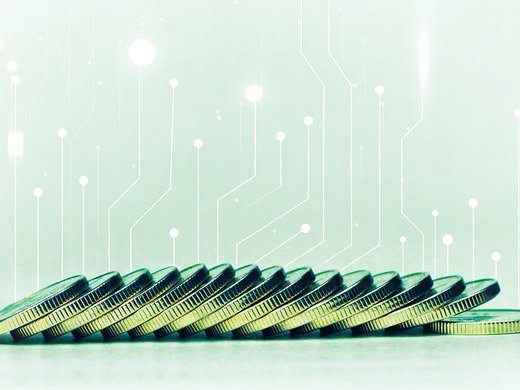In 1694, the Bank of England became the first bank to regularly issue banknotes as a means of payment. Before currency, the first known forms of money were agricultural commodities such as grain or cattle. Today, the world’s central banks maintain a legal monopoly on the creation and destruction of money. However, with the rise of the internet and cryptocurrencies such as bitcoin, central banks are now under pressure to develop their own digital currencies.
Central bank digital currencies (CBDCs) are increasingly seen as a potential replacement for physical cash. A 2021 survey conducted by the Bank for International Settlements found that 86 percent of central banks were actively researching the potential of CBDCs, while 60 percent were experimenting with the technology and 14 percent were deploying pilot projects. While China’s digital yuan has received the lion’s share of media attention, more than 100 countries are exploring CBDCs.
Together with the rapid development of artificial intelligence (AI), CBDCs present both opportunities and challenges. Like paper banknotes, CBDCs represent a medium of exchange and a store of value. Like cryptocurrencies, CBDCs are intended to provide a secure, efficient and convenient form of digital currency. However, unlike cryptocurrencies, CBDCs are backed by government.
Even as the technology is expected to reduce transaction costs and increase financial inclusion, CBDCs also raise significant concerns around personal privacy. As software, CBDCs would give central banks an efficient and quantifiable means to monitor currency data and regulate transactions, while also offering highly detailed information about each currency transaction. Indeed, even as the technology might provide near-instant settlement, expand financial inclusion and reduce transaction costs, it would also represent a level of finely tuned government control that we simply have never seen before.
When Money Is Software
As the Bank of Canada observes, the programmable design of CBDCs means that applications and services can be built on top of the technology’s software architecture. The use of smart contracts, for example, in the design of CBDCs would provide central banks with a means to deploy programmable online contracts that automatically execute according to predetermined terms and conditions. To be sure, not every CBDC implementation will make use of smart contracts — particularly given the risks of errors in execution. Nonetheless, the range of possible applications that might be built on top of CBDCs is enormous.
Using CBDCs as data building blocks, governments could make regular adjustments in the money supply, tax rates, interest rates and foreign exchange rates. Leveraging AI, CBDCs could effectively automate a range of monetary and financial processes, removing gatekeepers while accelerating government oversight. Just as algorithms already detect money laundering and terror financing, AI could be deployed to eliminate counterfeiting, tax avoidance and fraud detection in real time.
In fact, AI could ultimately replace much of the legal supervision currently administered by regulators and law enforcement while accelerating the speed and scale of global transactions. Much as AI platforms like ChatGPT evolve by ingesting enormous amounts of public data, so AI could be deployed to completely transform the world’s financial architecture.
Critics of CBDCs complain that the technology heralds the rise of an electronic surveillance state. As libertarians note, the main danger of CBDCs is the unwarranted power they will afford government gatekeepers. Rather than simply functioning as a medium of exchange, CBDCs would also function as units of data within a highly centralized data economy. Digitized government currencies would make it possible for central banks to track and surveil citizens at extremely fine levels of granularity, while ensuring broad compliance to government diktat.
Proponents of “decentralized finance,” or DeFi, argue that distributed ledger technologies like blockchain, in contrast to CDBCs, eliminate the dangers of government overreach. Where CBDCs and other centralized systems depend upon banks and third parties to hold money and facilitate the movement of money, cryptocurrencies are issued and validated by decentralized blockchain networks. Indeed, even as most CBDCs require gatekeepers, cryptocurrencies remove human oversight by using a token-based system that only requires the verification of the object used to pay.
Advocates of cryptocurrencies point out that DeFi increases both privacy and resiliency while avoiding the choke points found in centralized systems. Of course, the main disadvantage of cryptocurrencies is their limited speed and scale. Blockchain networks like bitcoin are designed to prioritize security and decentralization over speed. On average, it takes 10 minutes for a bitcoin transaction to be confirmed and added to a blockchain network. By comparison, the Visa payment system can already process up to 24,000 transactions per second.
Government by Algorithm
In addition to the problem of data centralization, technological automation threatens to undermine the current dollar-based system. As Nouriel Roubini writes, new payment systems such as China’s WeChat Pay and Alipay are accelerating a long-term shift away from the global monetary and financial system led by the United States. With the addition of AI and machine learning, technological innovation could make conventional models of global governance redundant.
For leading Silicon Valley thinkers such as Tim O’Reilly, this “government by algorithm” is precisely what’s needed to upgrade government for the data economy. While cash is essentially untraceable, AI-mediated central banks could track every unit of financial data, driving iterative improvements over time. Moreover, even as financial crime could be largely eliminated, direct government transfers could be constructed around highly quantified planning models.
CBDCs would likely mean dramatically new technocratic systems of banking and finance. And for many libertarians, this is precisely the problem. Nonetheless, change is coming. Technology is reshaping the global economy and this includes remaking the world’s banking system. As Kristalina Georgieva, the managing director of the International Monetary Fund, points out, careful design will be critical to maintaining trust in CBDCs. Beyond the current limits of distributed ledgers, the design of the technology itself will be key to avoiding government overreach in the data economy.



